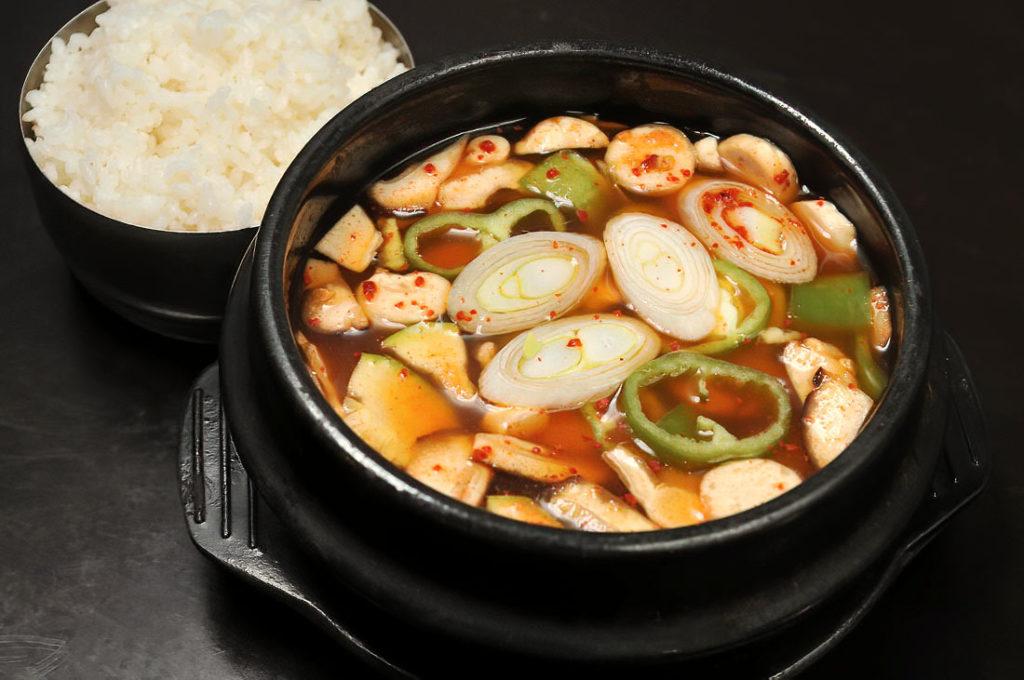Bibimbap soup takes the essence of the classic Korean dish Bibimbap and transforms it into a hearty, soul-warming soup. This dish combines sautéed vegetables, rice, and a flavorful broth, all topped with an egg for extra creaminess. Perfect for those new to Korean cooking, this recipe explains each step to make the flavors approachable yet authentic.
Preparation Time
- Prep time: 25 minutes
- Cook time: 35 minutes
- Total time: 60 minutes
Ingredients (for four people)
- 1 tablespoon sesame oil
- 1 tablespoon vegetable oil
- 1 medium onion, chopped
- 2 garlic cloves, minced
- 1 medium carrot, julienned
- 1 zucchini, julienned
- 1 cup spinach, wilted
- 1 cup mushrooms (shiitake or button), sliced
- 2 tablespoons gochujang (Korean red pepper paste)
- 1 tablespoon soy sauce
- 1 teaspoon sugar
- 4 cups vegetable or chicken broth
- 2 cups cooked white rice
- 4 eggs (1 per serving)
- 1 tablespoon sesame seeds (for garnish)
- 2 green onions, chopped (for garnish)
1 tablespoon is circa 15 ml, and a teaspoon is circa 5 ml.
Preparation Method
Step 1: Sauté the Vegetables
Heat sesame oil and vegetable oil in a large pot over medium heat. Add the chopped onion and garlic, sautéing until soft and fragrant. Add the carrots, zucchini, mushrooms, and wilted spinach, and cook for about 5 minutes until the vegetables are tender.
Step 2: Create the Broth
Add the gochujang, soy sauce, and sugar to the pot, stirring to coat the vegetables. Pour in the broth and bring the mixture to a simmer. Let the soup simmer for 10-15 minutes to allow the flavors to meld.
Step 3: Prepare the Rice
While the soup simmers, prepare your rice. Divide the cooked rice evenly into 4 bowls.
Step 4: Add the Egg
In a separate pan, fry or poach 4 eggs, depending on your preference. You want the yolk to remain soft to be mixed into the soup later.
Step 5: Assemble the Soup
Ladle the hot soup over the rice in each bowl. Top each bowl with a cooked egg. Garnish with sesame seeds and chopped green onions. Break the egg yolk into the soup before eating to add richness.

Tips and Tricks
- Gochujang: Adjust the amount of gochujang depending on your spice tolerance. Start with less if you’re unfamiliar with its heat.
- Soft Egg: For a perfectly runny yolk, fry the egg for about 2-3 minutes or poach it for 3-4 minutes.
Serving Suggestions
- Serve with Kimchi: A small side of kimchi pairs perfectly with Bibimbap soup, adding a crunchy, tangy contrast to the rich broth.
- Banchan (Side Dishes): Traditional Korean side dishes like pickled radish, seasoned spinach, or stir-fried vegetables elevate the meal.
Wine Pairing
A dry Riesling or Chenin Blanc might complement the spice and richness of the Bibimbap soup, offering balance.
Nutritional Information (Per Serving)
- Calories: 460 kcal
- Protein: 18g
- Fat: 18g
- Carbohydrates: 58g
- Fiber: 6g
- Sugar: 8g
- Sodium: 800 mg
Dietary Modifications
- Vegetarian: Use vegetable broth and omit the egg for a vegan-friendly version.
- Gluten-Free: Use tamari instead of soy sauce for a gluten-free option.
About the Bibimbap Soup
Bibimbap soup captures the essence of traditional Bibimbap but in a comforting, warming broth. The dish offers a delightful mix of textures, from the soft egg yolk to the crunch of fresh vegetables. The gochujang provides a signature Korean spice balanced by the umami of soy sauce and the richness of sesame oil.
Cultural Context
Bibimbap, meaning “mixed rice” in Korean, is traditionally served in a hot stone bowl with various vegetables, rice, and protein, all mixed with gochujang. This soup version simplifies the dish, keeping the flavors intact while transforming it into a one-pot meal perfect for any season. It’s a versatile dish families across Korea enjoy, often served with banchan (side dishes).


